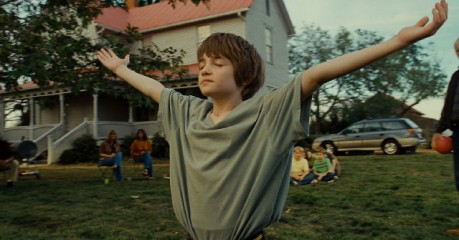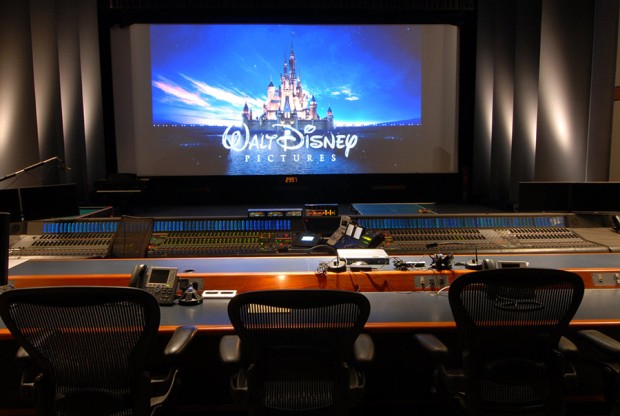The Sound Life of Timothy Green
Disney’s “The Odd Life of Timothy Green” is the whimsical, heart-warming story of how one very special boy changes the lives of everyone with whom he comes into contact. Blending elements of fantasy and nature, Timothy Green comes to life in an unusual way that not only sets the tone for this fantastical tale, but also creates a unique opportunity for the sound team to do some of their best work.
Digital Studio Services sat down with Re-Recording mixer David Fluhr and music editor, Jay Richardson to talk about their experience working on the studio lot, what it was like working with Academy Award Nominated filmmaker, Peter Hedges and the role sound played in “The Odd Life of Timothy Green.”
Working At the Walt Disney Studios
A sound industry veteran and a Walt Disney Animation favorite, Dialog and Music Re-Recording Mixer David Fluhr, CAS has mixed several movies for the Walt Disney Studios including Enchanted, Step Up 3D, Tangled, Princess & the Frog and Tinker Bell to name a few. The Studio has been like a second home to Fluhr, with his first project dating all the way back to 1986. “My first film was White Fang 2,” Fluhr recalls, “I continued to work freelance on Disney films until the opportunity came in 2004 to be a resident mixer on Stage A.”
Stage A, Disney’s premier dub stage, was originally built as a scoring stage and has scored such films as Mary Poppins and Sleeping Beauty. A re-recording stage since 1987, Stage A has been the dub stage for projects such as Good Will Hunting, Rescuers Down Under, Pirates of the Caribbean, Princess & the Frog, Tangled and most recently, The Odd Life of Timothy Green. “This stage (Stage A) has such a pedigree,” Fluhr says, “There is so much legacy and history that has come out of the sound department here in general.”
On Working with Peter Hedges & The Odd Life of Sound
A novelist, screenwriter and director, Peter Hedges is the renowned filmmaker behind such notable projects as What’s Eating Gilbert Grape, Pieces of April, About A Boy and Dan In Real Life. His most recent project, The Odd Life of Timothy Green features music and sound design that explore the strings of unique instruments but are also guaranteed to tug at the strings of the human heart.
From the quiet melancholy that permeated the film before Timothy’s arrival to the dramatic way that he enters the world, it is clear early on that sound plays a very important role in the film. In a recent panel discussion at the Walt Disney Studios, Peter Hedges expounded on his vision of the sound in the Odd Life of Timothy Green . “I’m a big lover of the hand-made, made-by-humans sound and feel. These are ordinary people experiencing extraordinary things.” Fluhr pointed out that every single sound that went into the film was well thought out and a collaboration between the director, sound designers, Michael Kirchberger, Roy Waldspurger and the entire sound team. “There are large sections of dialog and some music montages,” David points out, “but then there are some areas where the sound effects really direct our emotional viewpoint.” From the environmental wind sounds to the crickets, most of the sound effects were indigenous to the area and were the real thing. “It wasn’t just library cue number 8 or crickets cue number 2,” Fluhr remembers, “It was custom design stuff.”

According to Fluhr, creative choices were made early on that the ‘performance was king;’ a little bit of noise in the track would be accepted if there was a performance that worked. “The actors are the ones actually speaking the words and creating the characters,” says Fluhr, “our goal is not to color that.” When the dialogue track and production sound are recorded in different locations under difficult circumstances, it can be a real challenge for the re-recording mixer to preserve the performance.Through careful planning and thoughtful consideration of location, the production mixer, Whit Norris, CAS provided the sound team with a superior recording from which Fluhr and Waldspurger were able to make a velvety smooth dialogue track. “You could really hear the words and we were able to preserve most of the performances,” says Fluhr. Fluhr was fortunate enough to have the demo tracks of the music fairly early on. “Those tracks provided by music are not usually flushed out with the real orchestra yet,” Fluhr points out, “But the sound designers were able to work with those tracks. We were lucky that we had the pre-planning and collaboration on the sound track and the time to fashion the track and really detail it.” Both Fluhr and Richardson refer to the process as sort of like playing an instrument. The goal of the entire sound team is to make music with the sound.
A very important aspect of the sound in OLTG is the combination of music with the other sound elements. As the film really doesn’t fit into the box of one particular category or genre, choosing the right music for the film was a challenge. “It was really interesting and exciting to find a specific voice for the music that felt organic to the film,” says Richardson. A combination of so many elements including drama, fantasy and comedy, finding the musical voice wasn’t so easy. According to Richardson, Emmy Award Winning composer Geoff Zanelli, worked incessantly early on and did a great job in finding a sound that inhabited the tone of the film which is not a typical tone. “He (Zanelli) came up with a beautiful highly melodic score and themes,” says Richardson, “Another aspect of the score that was important was finding some interesting colors and instrumentation and orchestration for it and that kind of played into this moment, the magical moment when Timothy Green comes to life.”
Like most films, sound is a critical part of telling a story, and of course collaboration amongst the filmmakers and the creatice sound team is crucial. But in order to tell a magical story like “The Odd Life of Timothy Green,” another type of magic is necessary, and that is the magic that happens when creative colloborators come together. “Convention was left at the front door.” Fluhr Asserts, “this project was not a cookie cutter, not painted by numbers and reminded me of why I got into the business.” Added together, a speccial film about a special boy that comes to life, and the team that helped bring this film to life is really what Disney magic is all about. And Disney Digital Studio Services is proud to be part of that magic.



